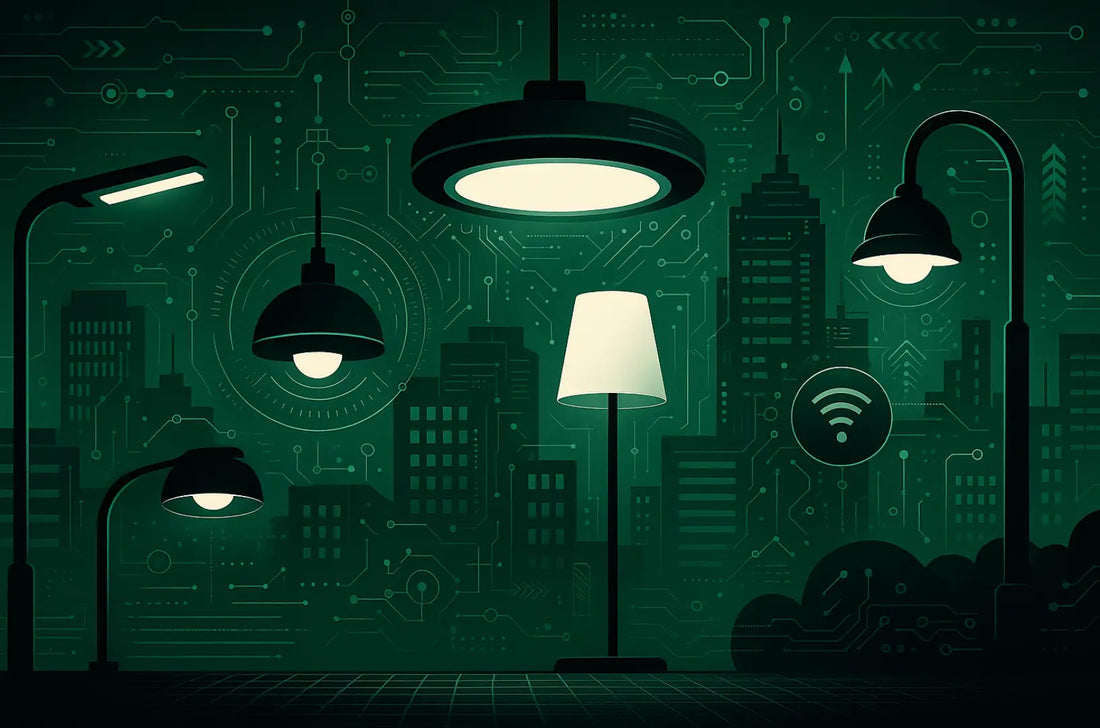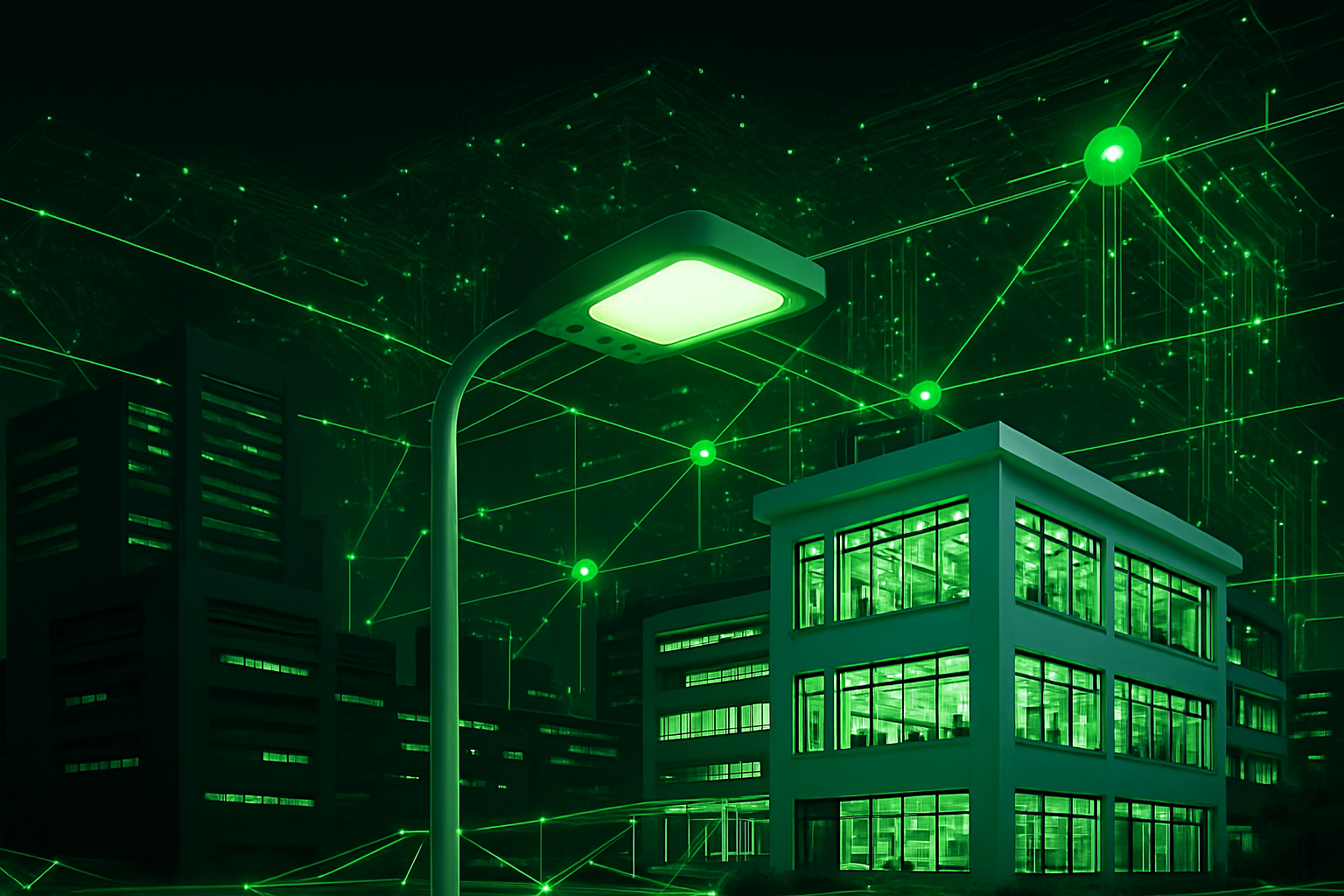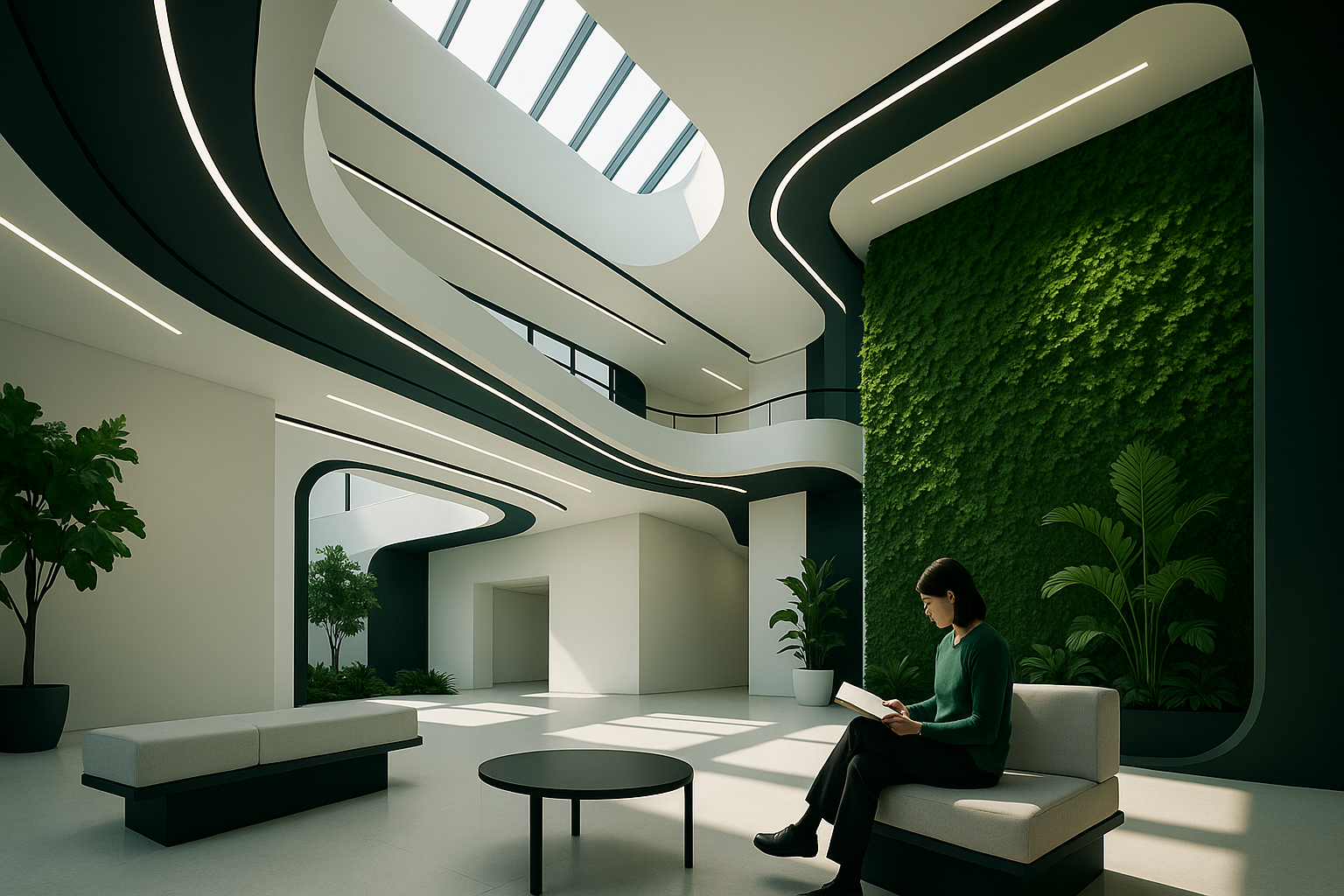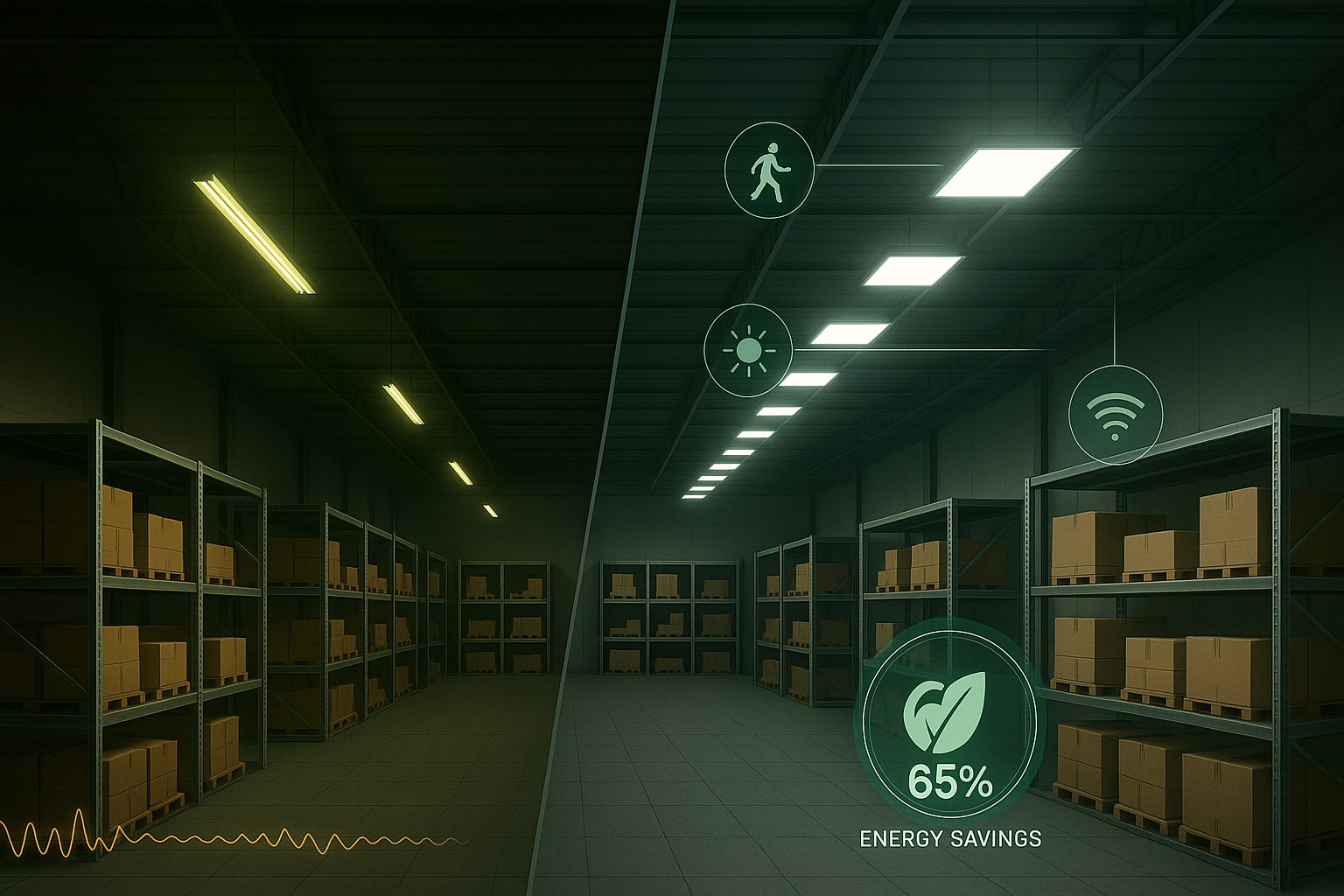
Expert Lighting Design in the Age of Smart Buildings – Why It Matters Setting the Scene: From Lamps to Living Systems
Share
Setting the Scene: From Lamps to Living Systems
A generation ago, building lighting was judged almost solely by brightness and running cost. Today, it is expected to sense occupancy, speak to the BMS, guide emergency egress, and elevate well-being—all whilst trimming carbon. Smart buildings demand no less, and that is why expert lighting design now sits centre-stage.
Yet “smart” can feel slippery: is it the Bluetooth chip in a luminaire, the cloud dashboard that visualises energy data, or the algorithm that nudges brightness to match a circadian curve? In practice, it is the seamless choreography of all three. Expert design is the art—and science—of making that choreography effortless for the end-user while invisible to the eye.
Why Expertise Matters More Than Ever
Poorly specified lighting may still “switch on”, but it will never deliver the intelligence, efficiency, or comfort promised by a modern smart building. Engaging an experienced designer safeguards:
-
Performance-led specification – luminaires, optics and drivers chosen for task needs, glare control and lifecycle cost.
-
Interoperability – ensuring DALI-2, Bluetooth Mesh or KNX devices talk fluently to the wider building management system.
-
Compliance & certification – meeting Part L, EN 12464-1, emergency standards, and, increasingly, ESG reporting metrics.
-
Human-centric outcomes – colour temperature, flicker, and vertical illuminance tuned for alertness, recovery or retail impact.
-
Ease of operation – layered control logic that feels intuitive to FM teams and occupants alike.
Fail any one of these and the building owner inherits higher energy bills, frustrated users and an underperforming asset.
Lighting as Digital Infrastructure

Smart buildings thrive on data; lighting generates more of it, more evenly, than almost any other in-building technology. Every luminaire is a vantage point—already powered, ideally located, and increasingly embedded with sensors for:
-
Presence / motion (PIR, microwave, Time-of-Flight)
-
Daylight / lux level
-
Temperature and humidity
-
Asset tracking via BLE beacons
-
Air-quality and CO₂
When networked, this creates a built-in grid of environmental intelligence. Expert design harnesses that grid for three gains:
-
Operational efficiency – granular data feeds predictive maintenance and fine-tunes HVAC.
-
Space optimisation – occupancy patterns highlight under-used zones, guiding real-estate decisions.
-
User experience – responsive lighting that adapts in seconds, not schedules.
Networked Lighting Controls—The Beating Heart
Modern control platforms have outgrown the dimmer rack. They now combine edge devices (sensors and drivers) with IP gateways and cloud APIs. Key characteristics an expert will weigh include:
|
Characteristic |
Why It Matters |
Typical Choice Points |
|
Topology |
Determines scalability and redundancy |
Wired DALI-2 trunk vs wireless mesh |
|
Security |
Protects building data from intrusion |
TLS encryption, VLAN segregation |
|
Latency |
Affects responsiveness of scenes and sensors |
Edge logic vs cloud logic |
|
Open Protocols |
Avoids vendor lock-in |
DALI-2, BACnet, MQTT |
|
Analytics Layer |
Turns raw data into action |
Native dashboard vs API export |
Selecting and configuring the right mix is not trivial; it requires fluency in both electrical engineering and IT networking—skills that sit squarely in the realm of the specialist designer.
Regulation, Standards, and the European Lens
From Ireland’s NZEB regulations to the EU Green Deal, policy is tightening around building energy intensity. Lighting is one of the quickest wins, but only if controls are sufficiently sophisticated to satisfy new compliance pathways such as:
-
EN 15193-1 Energy Performance of Buildings—Lighting
-
ISO 52120-1 guidelines for Building Automation, Controls and Building Management
-
BREEAM and LEED credits for daylight and demand-controlled lighting
Expert designers keep pace with evolving guidance, ensuring specifications pre-empt rather than retrofit compliance—a critical advantage for investors and developers operating across borders.
Architecture Meets User Well-being

A beautifully detailed ceiling counts for little if the illumination flattens texture or casts glare across workstations. Architectural intent must therefore dovetail with photometric reality. Leading designers collaborate early with architects to:
-
Map focal planes, circulation paths and vertical surfaces.
-
Balance ambient, task and accent layers for depth.
-
Choose optics that sculpt rather than splash.
-
Position sensors unobtrusively without compromising detection.
Human-centric lighting (HCL) then adds a physiological dimension: tunable white profiles that track daylight rhythm, or scene presets that promote collaboration, rest or retail drama. With expert tuning, colour shift feels natural—never theatrical.
Core Elements of Smart Lighting Design
Below is a condensed, stepwise framework employed by specialist teams such as M-Light International when delivering smart-ready schemes:
-
Define Objectives – energy targets, WELL points, branding cues.
-
Audit Existing Infrastructure – wiring routes, ceiling voids, IT backbones.
-
Layered Concept – ambient groundwork, task precision, accent punctuation.
-
Control Zoning – logical rather than purely spatial groupings for flexibility.
-
Sensor Strategy – type, density and field-of-view matched to activity.
-
Protocol Selection – DALI-2 for granularity, Bluetooth Mesh for retrofit ease, or hybrid.
-
Visual Mock-Ups – 3D renders and BIM objects stress-tested with daylight data.
-
Commissioning & Training – guided handover plus user-friendly dashboards.
-
Continuous Optimisation – post-occupancy data analysis, firmware updates, scene refinement.
Each stage feeds the next, preventing the ‘value-engineering cliff’ that too often strips intelligence late in the build programme.
Retrofit Realities and Opportunities

Not every project is a new flagship tower. Warehouses, campuses and heritage sites still rely on fluorescent battens or early LED gear trays. Expert designers unlock value by:
-
Re-using existing wiring as DALI buses where feasible.
-
Specifying clip-in sensor nodes and wireless bridges.
-
Sequencing upgrades zone-by-zone to maintain operations.
-
Leveraging rebates and carbon-offset funding.
Case studies consistently show 50–70 % energy savings after retrofit plus gains in occupant satisfaction thanks to better colour rendering and reduced glare.
Managing Risk: Cyber-Security & Resilience

Once lighting is IP-enabled, it becomes part of the building’s attack surface. Best-practice design therefore includes:
-
Segregated VLANs or dedicated IoT networks.
-
TLS-encrypted command traffic.
-
Role-based access and audit logs within control software.
-
Local fail-safe modes if cloud connectivity drops.
Resilience planning also covers redundant gateways, emergency override switches, and documented firmware maintenance—tasks generally beyond the remit of the electrical contractor alone.
Beyond Illumination: Data-Driven Services
Lighting data can power a host of value-added services:
-
Workspace analytics – dashboards reveal utilisation trends, supporting agile-working strategies.
-
Indoor positioning – BLE beacons aiding asset tracking or way-finding apps.
-
Sustainability reporting – automatic export of kWh and carbon data to ESG platforms.
A holistic design anticipates these integrations, specifying luminaires that are “sensor-ready” even if certain services are phased in later.
Future-Proofing: AI and Adaptive Buildings
Machine learning is already creeping into lighting controls, predicting occupancy patterns or pre-empting lamp failures. In the near term expect:
-
Self-tuning scenes that learn user preferences.
-
Dynamic demand-response, dimming luminaires fractionally during grid surges.
-
Edge analytics modules inside drivers, minimising cloud latency.
By embedding upgrade pathways—from firmware to swappable sensor pods—expert designers ensure today’s scheme can accept tomorrow’s features without wholesale replacement.
Bringing It All Together
From the architectural sketch to decades of facilities management, expert lighting design is the thread that ties aesthetic aspiration to operational excellence. In the age of smart buildings, that thread becomes a fibre-optic backbone—carrying data, safeguarding budgets, and enriching human experience.
Choosing an off-the-shelf luminaire catalogue cannot deliver this joined-up value. It takes consultation, simulation, and a mastery of both light and logic. Put simply, expert design is the difference between a building that merely looks modern and one that behaves intelligently.
Next Steps with M-Light International
Whether you are master-planning a net-zero campus, refurbishing a Victorian warehouse, or seeking to improve ESG scores, M-Light International delivers design-led, technically robust lighting solutions that align with your strategic goals.
Visit www.mlightuk.com to discover how our team can illuminate, integrate, and future-proof your next smart-building project.
About the Author
David Breheney
Managing Director, M-Light International
With over 25 years of experience in the commercial lighting sector, David Breheney has built M-Light International into a trusted name for reliable, innovative lighting solutions across the UK. His deep expertise in architectural, smart, and energy-efficient lighting ensures that every client receives tailored support, from concept to installation. David remains committed to elevating lighting standards and shaping safer, smarter spaces for all.
